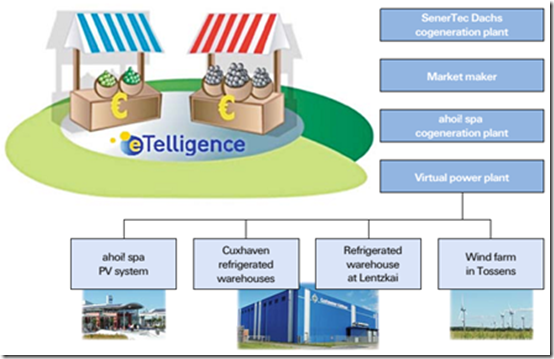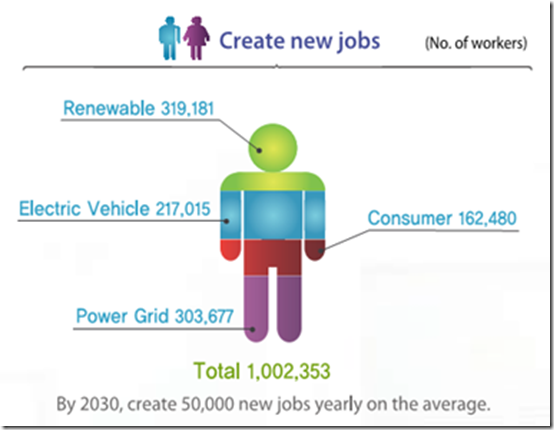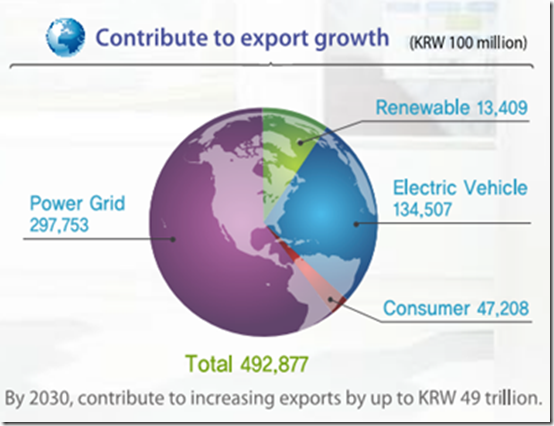The dramatic rise in renewable energy generators connecting to the grid is transforming the traditional electricity supply chain – particularly small-scale embedded generators (primarily solar PV) connecting to the distribution network.
This transformation is by no means smooth sailing for those involved, and there are a number of issues that have been raised impacting the successful and sustained integration of more renewables into the grid. These include commercial and economic issues such as the impact on network business models and the costs of connection and integration, as well as technical issues such as reverse energy flows and reliability issues related to intermittency.
- But are these issues valid?
- Have they been successfully addressed by projects, studies or trials in other parts of the world?
- Are international solutions transferable to the Australian market?
Marchment Hill’s recent analysis of projects from around the globe has revealed some innovative approaches to integrating more renewables into the grid. We highlight three of these below.
Example 1) The eTelligence project (EWE AG)
The eTelligence project provides important tools for the future by intelligently linking the fields of telecommunication, IT and energy.
Germany’s aim to obtain 50% of its energy from renewables by the year 2030 was already realised in the Cuxhaven region in 2008, where the urgency to look for new solutions is already evident. EWE has set the course for the future with its eTelligence project in Cuxhaven by linking large and small-scale consumers and producers via ICT technologies into an intelligent system.
“the foundations have been laid for the
energy supply system of the future”
The Cuxhaven model demonstrates how the regional balance between generation and consumption can contribute to security of supply and how ICT, in combination with existing energy structures can enable the optimisation of distributed energy supply. As a result, the foundations have been laid for the energy supply system of the future, by creating an efficient system that integrates distributed energy resources intelligently into the energy system.
It is worth noting that the eTelligence project addresses most of the renewable integration issues recognised by the industry ranging from commercial, economic to technical aspects, with a number of innovative concepts.
What makes it special?
The fundamental elements of the project include the Regional Marketplace, the Virtual Power Plant and the Intelligent Distribution Network.
The eTelligence marketplace
The digital energy marketplace enabled small and medium-sized power-generating systems, as well as medium to large electricity consumers, to trade energy products in a fully automated way. Plant operators did not need any extra know-how or extra time to participate in the electricity market and they were still able to achieve excellent prices when generation and consumption by the power plants, and renewable energy supply followed the requirements of the overall energy system.
EWE TRADING also offered a link with the wholesale market to ensure sufficient liquidity on the marketplace. Some of the market participants included EWE NETZ GmbH, various cogeneration plants and a virtual power plant consisting of a PV system, a wind farm and two refrigerated warehouses.
Active distribution network
In order to understand the network behaviour, network measurement data (active and reactive power, voltages, currents, frequency) was collected from 100 substations in the distribution network, saved and exported on request. The data was recorded for the participation of the network in the regional marketplace.
The installation of sensor and feedback technologies is the key in order to overcome infrastructural challenges related to the successful integration of renewable energy resources. It is an innovative approach which helps to avoid the expansion of the electricity network, helps to support the integration of renewable resources, and offers a major economic advantage.
Figure 1: Participants in the eTelligence marketplace (eTelligence)
The savings and load shift potential of the energy consumers were also evaluated in 650 households. The most important instruments for this were customer specific tariff incentives and the use of intelligent metering technology (smart meters), as well as the feedback of electricity consumption in real time. On average, electricity consumption was reduced by 11% with the real-time visualisation, which leads to higher energy savings and lower CO2 emissions.
What can we learn from this?
The technical and operational ability to create a far more efficient energy supply system exists. This new approach recognises and embraces the decentralised nature of the modern energy “ecosystem” and creates efficiencies for customers and value for the members of the supply chain.
The challenge for the Australian electricity market is to remove the regulatory and commercial barriers that prevent this future operating model from becoming the norm.
“The technical and operational ability to create
a far more efficient energy supply system exists”
Example 2) Jeju Island Smart Renewable Project
To achieve South Korea’s national greenhouse gas emission reduction goal, establishing Low-Carbon Green Growth Infrastructure is an urgent task for the Korean energy industry.
To promote the use of renewable energy, distributed energies and electric vehicles, which cannot be accommodated with its existing network infrastructure, establishing a smart renewable system is the key in this project:
- South Korea needs to foster the smart grid industry as a new growth engine that surpasses semi-conductors and IT products: they expect exponential growth in the world smart grid market.
- A great ripple effect in the economy is expected not only in the power and heavy electric industries but also in the related key industries of South Korea, including telecommunication, smart home appliances, construction, electric vehicles, and energy.
- South Korea aims to create more jobs in the highly value-added renewable energy industry, as well as creating various new business models.
What makes it special?
South Korea’s renewable integration and technology development are the result of its national strategic planning. Commercial, economic, and environmental benefits are among the key drivers. The Korean government also seeks to create the synergy between renewable development and other key national industries that are already playing an important role in the world market, especially the home appliance and automobile industries.
The Korean National Road Map committee, which is composed of approximately 130 experts from industry, academia, and R&D, collects expert opinions through interviews and workshops. It also holds hearings to solicit the opinions of experts and citizens who do not participate in the committee, with a view to developing a National Road Map for the smart grid and renewable integration to lead the low-carbon green growth in Korea.
The Jeju Island project embodies the Korean government’s long-term holistic vision. It is estimated that establishing the smart grid will not only solve Korea’s future energy problems and improve the quality of life, but will also bring other benefits such creating new jobs, reducing greenhouse gas emissions, lowering dependence on energy imports, increasing exports, creating domestic consumption, and avoiding the need to build new power plants.
Figure 2: Estimated job creation of renewable and smart grid development in South Korea (KSGI)
Figure 3: Estimated export contribution from renewable and smart grid development in South Korea (KSGI)
What can we learn from this?
Having a strong, national, coordinated and stable strategy for the transition to a low-carbon economy, which recognises the transformation the grid must undertake to support renewable energy targets, has a huge impact on the ability for that country to undertake ambitious projects to support that transition. While the project is ongoing, it has the potential to give South Korea a significant competitive advantage in the global market for smart technology.
Example 3) Orkney Island Smart Grid
The electricity network on the Orkney Islands is served by two 33 kV circuits of 20MW import/export each connected to the Scottish mainland. The existing generation at the outset of the project included 21 MW of capacity that could be automatically ‘intertripped’ in the event of an outage on one of the circuits to the mainland regardless of the demand on the Islands. According to conventional planning standards, the Orkney network was “full”. Scottish & Southern Energy Power Distribution (SSEPD) sought a quicker and more cost-effective way to provide further wind generation than the traditional approach of costly and time-consuming upgrades to the network including an additional subsea cable, which would cost about A$50 million.
It also wanted to:
- Facilitate bankable connections for new generators
- Minimise dependency on operator and manual actions.
What makes it special?
An active network management system was developed which curtails the real-time output of participating generators, demand or storage devices, to manage capacity constraints when they arise. It included dynamic line ratings assessment. Generators are instructed directly under automated controls to limit their power output to match the available export capacity to the mainland grid. Crucial to the scheme was agreement on defining the grid access arrangements including the real-time curtailment of wind generation output when necessary.
“The Orkney network is a blueprint for how power companies can use smart grids to connect high levels of renewable generation cost effectively to resolve grid congestion”
This approach was modelled and the curtailment forecasts were found to be acceptable to the banks who finance the schemes. There are now 20 generators with a capacity of 24MW, and in 2013 Orkney became a net exporter of renewable energy with 100% of local demand met by wind.
Smarter Grid Solutions’ technology has the potential to significantly improve the efficiency of the electricity distribution network in the UK. The Orkney network is a blueprint for how power companies can use smart grids to connect high levels of renewable generation cost effectively to resolve grid congestion.
The total cost of developing and delivering this innovative technical solution was less than A$850k. To connect similar levels of renewable generation by reinforcing the network in the conventional way, it would have cost around A$50 million, and taken considerably longer.
What can we learn from this?
Integrating more renewables into areas of network constraint can be achieved with efficient outcomes if networks and generators work together to understand the constraints and the technical and commercial options available.
The other 170 projects
These three projects and 173 more can all be found in MHC’s work for ARENA which is published online at: http://arena.gov.au/initiatives-and-programs/integrating-renewables-in-the-grid
This article was originally published here – and has been reprinted on WattClarity with permission. We’d seen Ryan present at All Energy 2014 and thought that these insights would be of interest to some of our WattClarity readers.
About our Guest Author
| Ryan Wavish is Senior Consultant at Marchment Hill Consulting.
Ryan has over 10 years management consulting experience in organisations across Australia, NZ and the UK. He specialises in the electricity industry and in particular the impacts of emerging technologies and business models. Connect with Ryan via LinkedIn here. . |







10 years management consulting? How impressive!